The bean family, specifically green beans and peas, have a lot in common. If you walk into your neighborhood grocery store, you’ll see some variety, but the difference lies primarily in appearance versus taste. Typically, they taste very similar, no matter how different they look.
There are different types of flat beans, and their shape affects how you cook them and how well they’ll soak in the flavors of other foods. For instance, flat beans have more surface area that touches a hot pan. As a result, they often cook more quickly. You can simmer rounder beans for longer to help them soak up flavors.
Still, flat beans are a unique and delicious addition to any stir-fry or casserole. Certain areas of the world have adapted recipes based on their size to create amazing dishes.
Here are five types of flat beans and some ideas on how to best cook them when you get your hands on some.
Table of Contents
1. Romano Beans
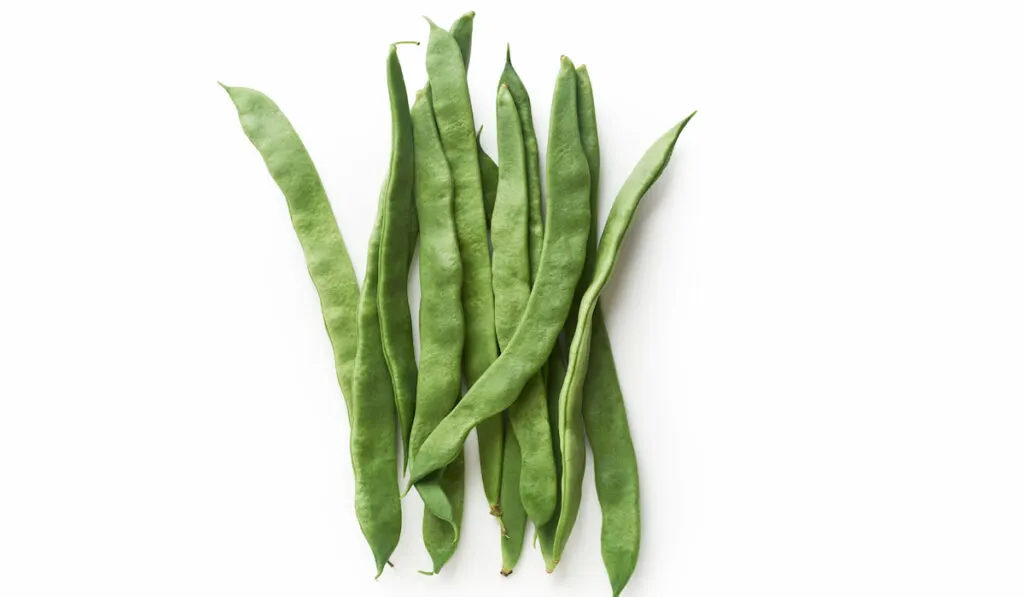
Romano beans are most likely the most well-known of all flat beans. These are usually wide and full of bright flavor. They offer a perfect balance aside saucy, rich Italian dishes and have long earned their name as Italian Green Beans. They’re also known as Helda beans and Indian beans based on where you shop.
These beans are bigger than your average green bean, so you’ll need much more time to cook them. However, they also have more flavor, so the payoff is worth your time. The bigger beans will have larger seeds, but the smaller ones will have a more tender taste and flatter beans.
Many people braise them in butter, light sauces, and meats for dinner dishes. You can soak them ahead of time to make them softer.
2. Snow Peas
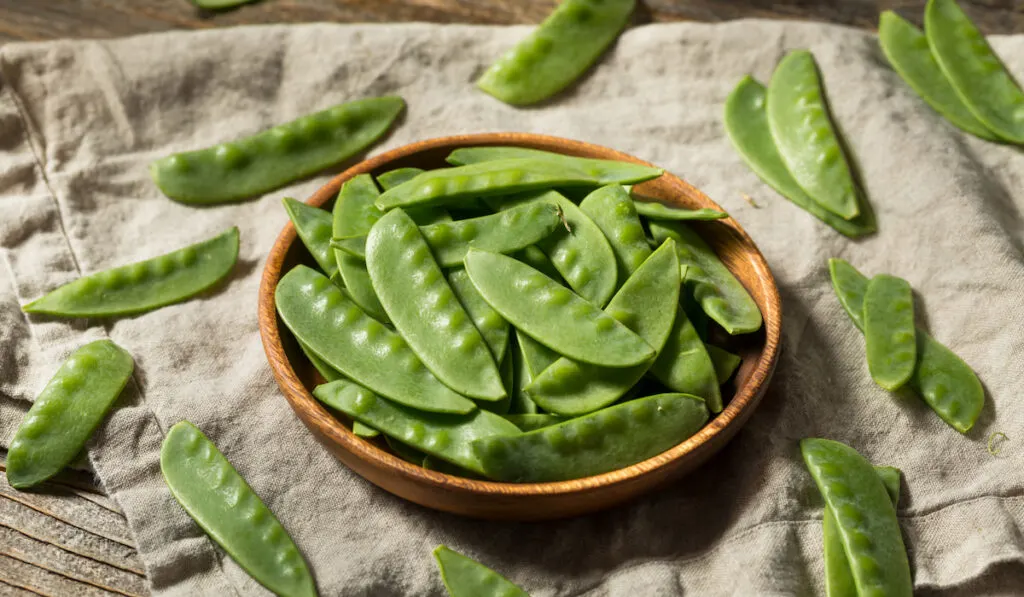
Technically, this isn’t a bean, but snow peas fit the bill when you need something flat to cook with. Also, this is an easy substitute for any pole bean when you can’t find Romano beans.
The main difference between peas and beans is that peas are rounder, while beans come in various shapes. However, the thin snow pea skin closely resembles some of the Italian green beans we’ve seen.
You can use snow peas for a range of dishes with relatively reliable results. Just know that peas are more delicate than most beans, so they can’t cook for as long, or they’ll start to break down in your pan.
3. Fava Beans

Fava beans are also called broad beans because of their shape. The side of fava beans is long and flat, with rounded ends on both sides. They’re a large bean that chefs use to balance out acidic dishes with their creamy and mild flavor.
The main drawback with fava beans is that they take a long time to prep. It’s not like a green bean that you can toss into the pan five minutes before dinner and make something yummy. These beans need to be double blanched to get to the inner bean that’s most edible.
If you’re up for a bit of extra work, they make great salads, and the greens are also good too. They’re often paired with other vegetables and cheeses.
4. Purple String Beans
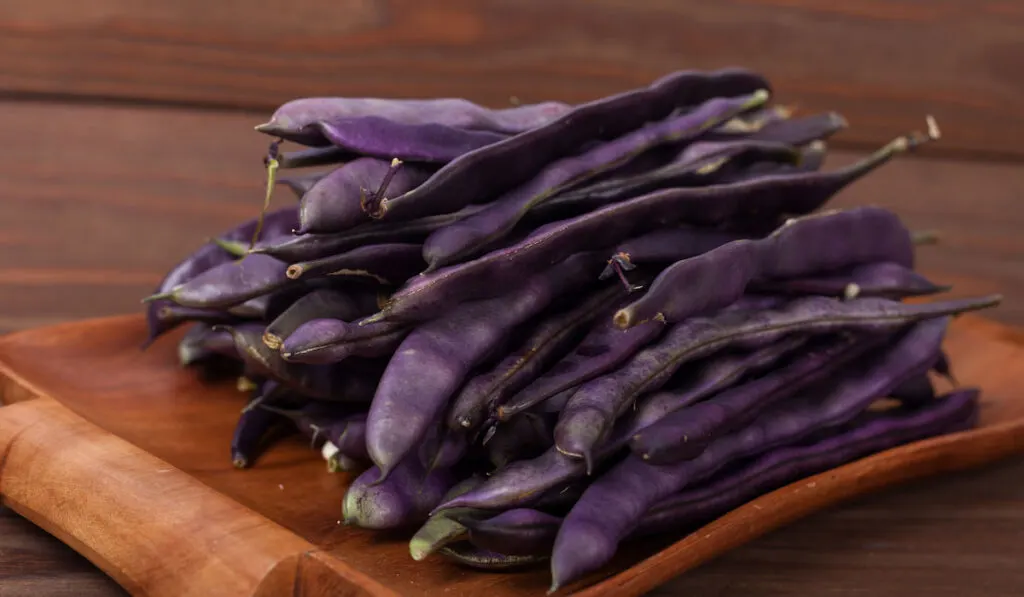
Interestingly, purple string beans get their unique color from the same antioxidant that makes blueberries blue. That means if you eat a lot of purple string beans, you’ll increase your antioxidant levels even more!
Unfortunately, it’s not as good as it sounds because you’ll have to eat them raw to get the full antioxidant benefits. This is because the antioxidants break down in the presence of heat. However, they’re still delicious, and the color is a conversation starter.
They taste the same as most other pole beans you can buy, and if you cook them long enough, the purple goes away, and they look like any other bean.
5. Edamame
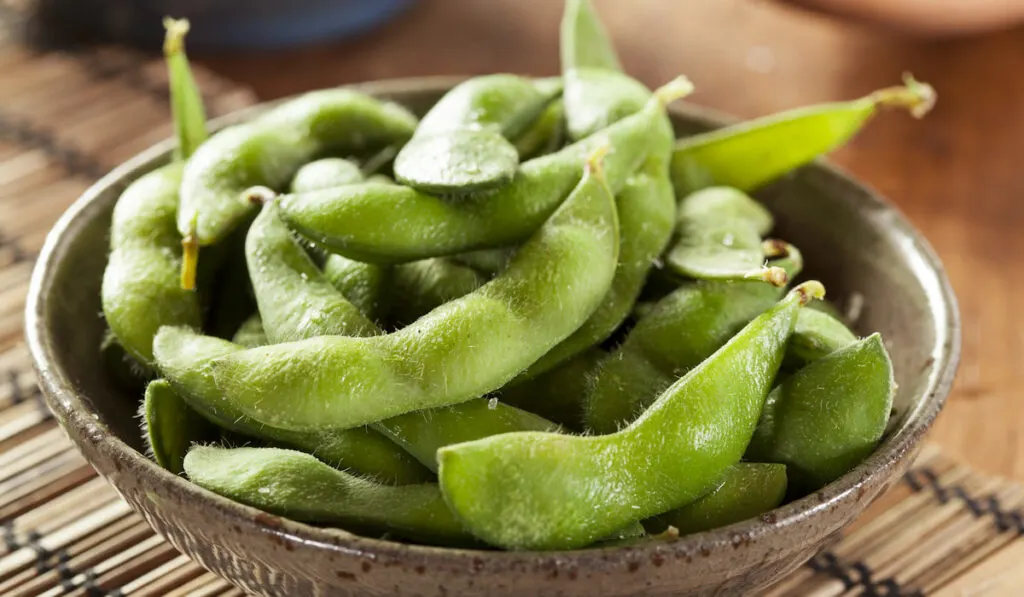
Edamame in their shells has a flattish shape. When you take the soybeans out, however, you’ll reveal a round, oval bean that is a staple worldwide.
Most of the time, you only taste soybeans in foods. However, they’re in practically every Asian dish, and soy is prevalent in many Western foods as well.
You’ll find edamame on appetizer lists at your favorite Japanese restaurant these days. It’s a healthy starter that tastes great without making you feel full before your mains arrive.

Things to Cook with Italian Green Beans
Flat beans taste great and are a hearty vegetable whether you’re eating solo or cooking for a family. They have a ton of fiber and are low in calories, making them healthy and delicious.
One of the easiest ways to cook flat beans is in a frying pan with garlic, butter, salt, and pepper. You can add onions or shallots to the pan for added flavor. If you like spicy food, you can throw some chilis into the dish to spice things up.
You can start expanding your recipes as you get more comfortable cooking flat beans. Another great recipe, for example, involves simmering flat beans with tomatoes, garlic, and basil. Season to taste and serve it alongside some of your favorite Italian classics like spaghetti, lasagna, or fettuccine alfredo.
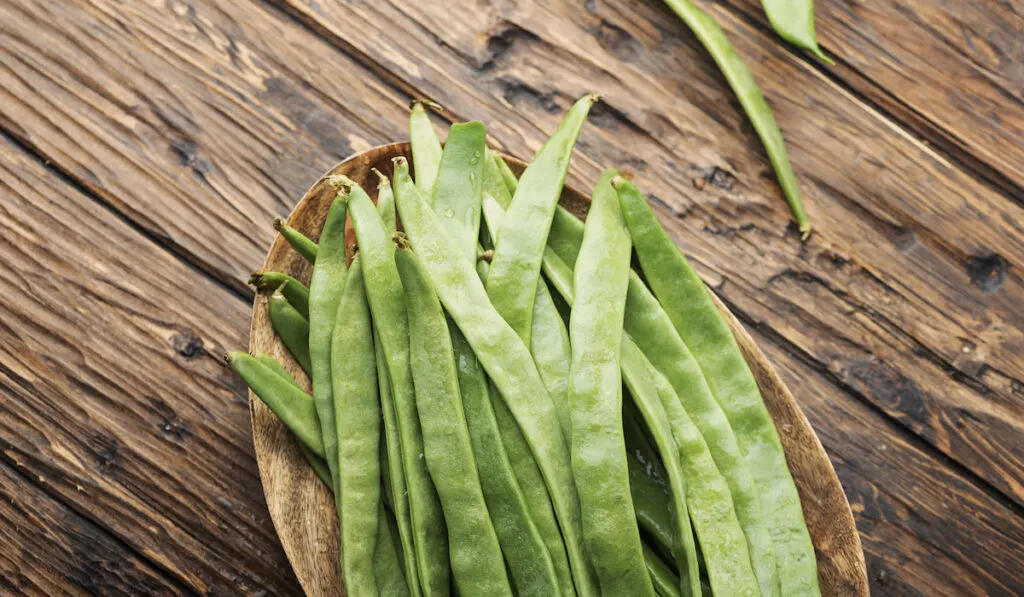
The Health Benefits of Beans
Whether your beans are flat or round, they are all good for you. Beans generally are high in fiber and antioxidants. They’re also a great source of protein if you’re trying to add more protein to your diet.
In addition, the protein gets into your body without the accompaniment of too many calories, as would often be found in foods like steak or ground beef.
One of the remarkable things about beans is that they make a substantial dish without all the calories of pasta, meat, or foods like potatoes. You can enjoy a full meal without the adverse effects of higher-calorie foods.
Beans also help moderate your blood sugar and are believed to improve heart health. So, everyone should be eating more flat beans and beans in general! They’re great for you and taste fantastic when you cook them with the right recipe.
